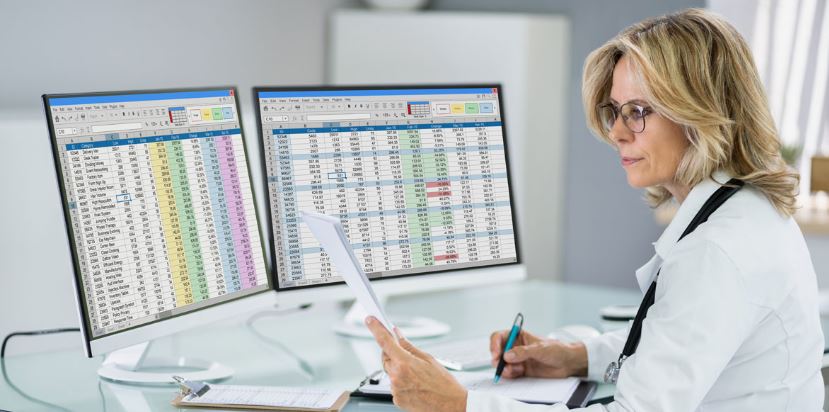Unlike other medical specialties, dermatology has multiple elements. Procedures can range in complexity from a skin transplant to plastic surgery, and the pricing has to reflect this. Dermatologists have to expedite accurate and quick medical billing and coding procedures because they see more patients than physicians in other specialties. CPT coding for dermatology is the process of converting diagnoses, procedures, and treatments into globally accepted alphanumeric codes. Meticulous coding is essential to facilitate proper claim processing, payment, and efficient exchange of information between dermatologists and insurers.
Importance of CPT coding for dermatology:
In dermatology, precise CPT (Current Procedural Terminology) code coding is essential. Healthcare providers can better express their services to insurance companies for reimbursement by using CPT codes. These codes guarantee accurate invoicing, make medical treatment monitoring easier, and aid in statistical analysis. Healthcare providers may guarantee financial sustainability, compliance, and transparency by accurately reporting and documenting dermatology medical billing operations using the relevant CPT codes.
Common CPT coding for dermatology:
Skin Biopsy CPT Codes:
During a skin biopsy, a dermatologist takes skin samples from the exterior of the body. After that, they study the gathered cells to learn more about certain diseases or skin issues.
- CPT Code 11102: Individual lesion; tangential biopsy of the skin (scoop, shave, curette, saucerize, etc.).
- CPT Code 11103: Supplementary code for each extra lesion included in a tangential skin biopsy.
- CPT code 11104: Punch biopsy of a single lesion and simple skin closure if necessary is CPT code 11104.
- CPT Code 11105: Punch biopsy add-on code CPT Code 11105 applies to each extra lesion.
- CPT Code 11106: Individual lesion; incisional skin biopsy, including wedge and simple closure.
- CPT Code 11107: For incisional skin biopsies, add a code for each extra lesion.
- CPT Code 40490: Procedure for lip excision.
- CPT Code 69100: Procedure for external ear excision.
Lesion Removal CPT Codes:
To eliminate premalignant, benign, or malignant lesions, methods like chemical therapy, electrosurgery, laser surgery, or cryosurgery may be used. Furthermore, in the event that more than one lesion is removed, you might use several operation codes.
- CPT Code 17000: First lesion; elimination of premalignant lesions, including active keratoses.
- CPT code 170003: Destruction of two to fourteen premalignant lesions, including actinic keratoses, is coded as CPT 170003.
- CPT Code 17110: Removal of up to 14 benign lesions that are not cutaneous vascular lesions or skin tags is covered by CPT Code 17110.
CPT Codes for Mohs Micrographic Surgical Procedures:
This surgical method completely eradicates skin cancer. Typically, a pathologic evaluation is conducted after the tumor’s tissue is removed during a Mohs surgery.
- CPT Code 17311: First stage of Mohs micrographic technique on hand, neck, and feet.
- CPT Code 17312: Mohs micrographic technique on the hand, neck, and feet; each new stage.
- CPT Code 17313: First stage of Mohs micrographic method on trunk, arms, and legs.
- CPT Code 17314: Mohs micrographic method on the trunk, arms, and legs; each new stage.
CPT Codes for Excision of Lesions:
Surgery is used to remove the lesions along with the surrounding tissue.
- CPT Code 11403: Excision of benign lesions involving the arms, legs, trunk, or borders.
- CPT Code 11603: Excision of malignant lesions including the arms, legs, trunk, or margins.
Also Read:
- Importance of Clinical Documentation Improvement
- Difference between EHR and Practice Management Software
- Managing Accounts Receivable
CPT Codes for Healing Wounds:
The intricacy of wound closure varies according to the amount of the repair. It can therefore be complex, moderate, or straightforward.
- CPT codes 12031 and 12032: Ad interim; reconstructive; for wounds on the scalp, axilla, trunk, and limbs (not the hands or feet).
- CPT codes 13120 and 13121: Leg, arm, and scalp repairs; extensive; complications.
CPT Codes for Pathology:
Pathology therapies analyze skin and tissue at the microscopic cellular level using advanced laboratory instruments and assays.
- CPT Code 88304: Specializing in surgical pathology, this level III examination includes both a microscopic and gross investigation.
- CPT Code 88305: Level IV surgical pathology is necessary, including a microscopic and gross investigation.
- CPT Code 88312: Special stain included with report and interpretation.
- CPT code 88341: Immunocytochemistry or immunohistochemistry-related analyses are coded as CPT 88341.
CPT coding for dermatology phototherapy and laser therapy:
Different laser wavelengths are used in laser therapy to treat a variety of skin problems and for cosmetic purposes. On the other hand, phototherapy treats skin diseases including eczema and psoriasis using UV radiation.
- CPT code J7308: Topical application of aminolaevulinic acid HCL is coded as J7308.
- CPT Code 96567: Exogenous photodynamic therapy for the treatment of malignant and premalignant lesions.
- CPT code 96900: UV light-assisted actinotherapy is CPT Code 96900.
- CPT code 96910: Photochemotherapy (petrolatum with UVB or tar and UVB) is coded as CPT 96910.
- CPT codes 96920 and 96921: These codes refer to laser therapy used to treat inflammatory skin disorders.
CPT Coding for dermatology evaluation and management (E/M):
- CPT codes 99201–99205: CPT codes of new patients for office or other outpatient visits.
- CPT codes 99211–99215-29215: Dedicated patient offices or additional outpatient appointments
- Time based CPT codes: 99202 (15-29 minutes), 99203 (30-44 minutes), 99204 (45-59 minutes), and 99205 (60-74 minutes) are time-based codes.
- Coding schemes categorized by level of difficulty: 99212 (simple), 99213 (low complexity), 99214 (moderate complexity), and 99215 (high complexity).









